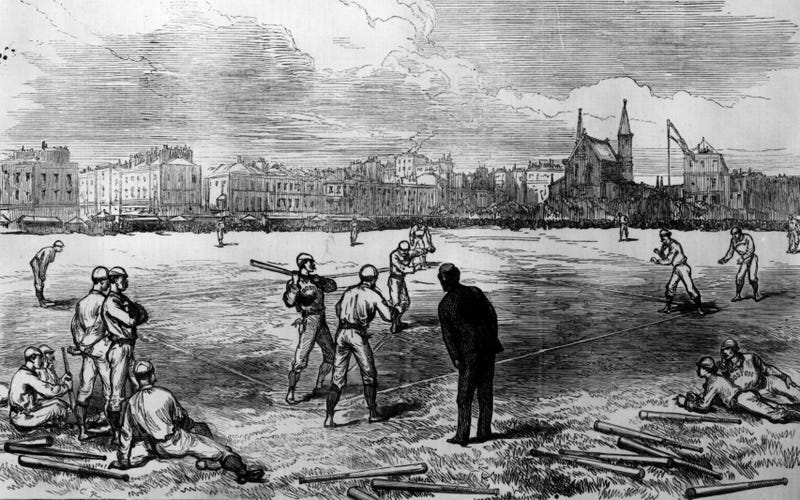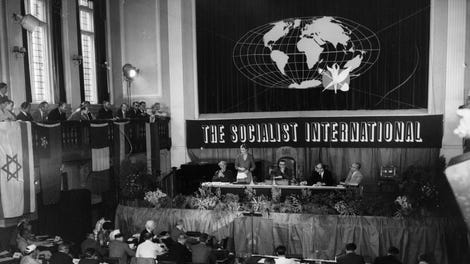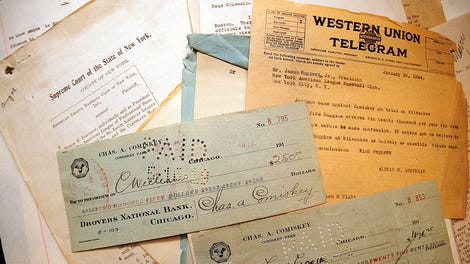
The St. Louis Cardinals hacking scandal—in which then-scouting director Chris Correa used a former colleague’s password to access the Houston Astros’ player database over 50 times in 16 months—is unprecedented in baseball history. This must have made Commissioner Rob Manfred’s decision on how to punish the Cardinals all the more difficult.
Ultimately, the league settled on the Cardinals sending the Astros $2 million and their top two draft picks for the 2017 draft. (Those are the 56th and 75th overall picks—the Cardinals lost their first-round pick when they signed free agent Dexter Fowler during the offseason.) It’s hard to judge the severity of the punishment. $2 million appears a little light, but it’s the maximum amount MLB can fine one of its clubs; the actual value of a draft pick, meanwhile, is almost impossible to peg, but the expected value of these two is probably $15 to $20 million. The Astros, at least, are publicly calling the punishment fine, or adequate.
“We’re pleased to have closure on this,” their general counsel told Sports Illustrated. “We’re happy to be getting past this.”
The Correa scandal is truly one of the wildest in baseball—or sports, generally—in recent memory. But baseball history is riddled with absurd scandals, many of which shaped the course of the game as we know it today.
To put the Correa scandal in context, we reached out to three top baseball historians to ask whether they could think of any even remotely similar club-on-club crimes. While clandestine attempts at sabotage and espionage are old as the game itself, we found, this one remains unique—and not just because it involves computers.
“I ditched him first.”
Bill James, among other things a baseball historian and father of the sabermetrics revolution, would be as likely as anyone to know of some ancient precedent for Correa’s dirty deeds. He, though, can’t think of even a single old baseball scandal similar to the one at hand.
“It used to be a pretty common thing there would be arguments about who owned the rights to a player … there are dozens of those in baseball history, including issues involving Tom Seaver and Richie Ashburn, Lou Gehrig and others,” he wrote in an email. “But this is about the value of INFORMATION, rather than players, and it actually involves a kind of breaking and entering, so … don’t know that I know of any good parallels.”
In the opinion of John Thorn, the official historian for Major League Baseball, the closest parallel to the Correa scandal was “the conspiracy by the New York Giants of the NL to decimate the Baltimore Orioles of the AL in 1902, with the collateral though unintended benefit of permitting the AL to establish itself in New York for 1903.”
At the heart of this wild and distinctively old-timey tale is the thirst of legendary player and manager John McGraw for revenge on Ban Johnson, owner of the Baltimore Orioles, who’d fired McGraw as a player-manager in 1902. McGraw had learned Johnson planned to move the Orioles to New York, but had not included him in the plan. So, McGraw decided to beat him to the punch.
In a long blog post on the saga, Thorn quotes McGraw as such:
Do you want to know why I left Baltimore, and the American League, in 1902? Well, I’ll give you the real story. The move to shift the Orioles to New York had been contemplated for some time. In fact, I did much of the ground work, built up the contacts, scouted around for grounds, and was to get a piece of the club. Naturally, I assumed I would be manager. Then I suddenly learned that I no longer figured in Johnson’s New York plans and that he was preparing to ditch me at the end of the 1902 season. So, I acted fast. If he planned to ditch me, I ditched him first, and beat him to New York by nearly a year.
McGraw became the manager for the New York Giants, the role for which he is best known. Still mad, though, McGraw got Giants owner Andrew Freedman and Cincinnati Reds owner John Brush to buy up ownership shares in the Orioles and send their players to the Giants and Reds. Naturally, this incapacitated the Orioles, who had to, as Thorn says, “borrow players from other teams so that Baltimore could complete its schedule.”
After that whole debacle, the American League and National League decided to make nice, and, as a result, they “recognized the admission of the New York American League club, soon to be dubbed in the press as the Hilltoppers or Highlanders.” After 10 seasons as the Highlanders, the team changed its name to the New York Yankees, and became the ridiculously annoying team we all love to hate today.
Thorn also points to another baseball scandal of yore, in which Commissioner Kenesaw Mountain Landis gutted the St. Louis Cardinals’ farm system in 1938 after determining that the Cardinals were in “control [of] multiple teams in the same leagues, which was in violation of the rules,” per the baseball Hall of Fame. “These unofficially-affiliated teams would sell players to officially affiliated Cardinal farm teams only to get the money immediately back.” (Landis described these transactions as “gentlemen’s agreements.”) While all 74 minor leaguers were made free agents by Landis, the Hall of Fame website notes that “the majority of the players re-signed with their former clubs.”
“A decent enough ballplayer, but a scoundrel.”
Jacob Pomrenke, the editorial director of the Society for American Baseball Research, also struggles to come up with really good parallels to Correa’s nefarious deeds. (He knows from scandal, too: He leads SABR’s committee on Black Sox research, and is a persistent advocate for MLB reexamining Shoeless Joe Jackson’s case for reinstatement.)
Pomrenke says “there aren’t too many examples in baseball history of this kind of off-the-field shenanigans. Mostly the off-the-field stuff involved ‘pirating’ players from their contracts with other teams … which is how the Pittsburgh Pirates got their name.”
One example that came to mind for Pomrenke was what he calls “the most famous instance of technological espionage,” in which the New York Giants created a relay system to steal signs from the opposing team. The scheme was headed by Leo Durocher, alleged originator of the proverb “nice guys finish last.” SABR, working off Joshua Prager’s reporting on the case, describes the system as such:
Durocher installed coach Herman Franks in the manager’s office of the Giants’ clubhouse beyond center field in the Polo Grounds to steal opposing catchers’ signals. Franks would look through a telescope and relay the sign through an electrical-buzzer system to the Giants’ bullpen in deep right field, from where the sign would be flashed to the Giants’ hitters. The implication of this revelation is that Bobby Thomson might not have tagged Ralph Branca for arguably the most famous decisive home run in baseball history if not for spying, or at the very least that Thomson’s date with history would not have come about.
Pomrenke also points out that a Phillies outfielder named Pearce Chiles is known to be one of the earliest proponents of sign-stealing through a buzzer system. (SABR’s biography of Chiles begins: “Pearce Nuget Chiles was a ne’er-do-well, a scoundrel. A decent enough ballplayer, but a scoundrel.”)
Even these, though, aren’t really direct precedents for what Correa did. Sign stealing, even with the benefit of electric contraptions, is recognizably in a line of on-field gamesmanship. Email stealing is something else.
It’s unlikely that we’ll ever know the true impact of Correa surveilling the Astros’ trade and draft discussions, though someone will inevitably write a retrospective where the players discussed and the players the Astros gain through this year’s draft are evaluated and weighed against one another, all their WAR totaled and their impact on far-off pennant races assiduously judged. For now, though, this saga is over, and will settle nicely into its place as a shiny new toy for the baseball historians of the future, who will if nothing else note that 172 years after the New York Knickerbockers first organized their town ball club, the game still managed to surprise.






